Applications
| Module-Icon | App Applications |
|---|---|
| Event | none |
| Author | Maziar A. Sharbafi |
| Requirements | Module TM, TMSLIP,EMSLIP, MC1 and MC2 |
| teaching time | 45 min |
| Last modified | 11.7.2017 |
With the biomechanical study of legged locomotion, we take the following steps:
- design and perform experiments to investigate specific features in biological gaits
- Analyze the experimental data and develop a hypothesis about the targeted task (e.g. feature)
- build a template-based model to examine the hypothesis
- derive methods for design and control of machines (e.g., robots, exoskeletons)
- implement the findings in the previous step on the machine
- test the hypothsis in reality.
Such an structure of research is shown in Fig. 1 with and example. In this example, we have done experiments on perturbed standing to see the contributions of the muscles. Then, we built a model and derive a hypothesis on biarticular actuation, finally we design some experiments to verify the design and control principle on BioBiped robot. For more expalantion see [Sharbafi16].
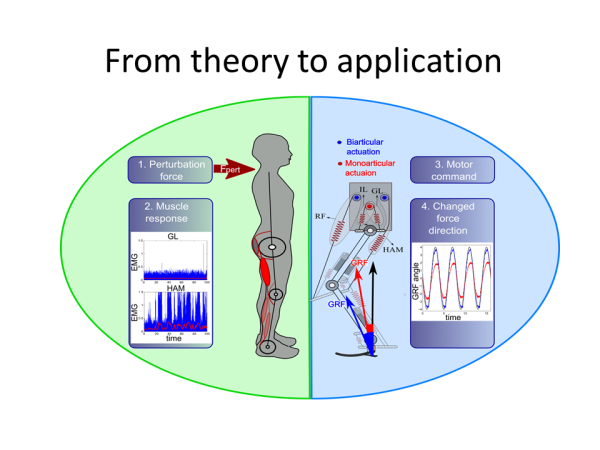
Figure 1. The concept of transferring knowledge from human to robot from Sharbafi 2016.
In this section, we present two applications of the proposed models on the hardware systems.
SLIP-based hopping with MARCO-HOPPER-II robot
The first one is SLIP based control with stiffness adaptation for stance control of a two segmented leg called MARCO-Hopper-II (Fig. 2). In this implementation the of the template-based models, stable hopping in 1d is achieved [Oehlke 2016]. The robot is shown in Fig. 2. This study was presented in detail in [Oehlke16].
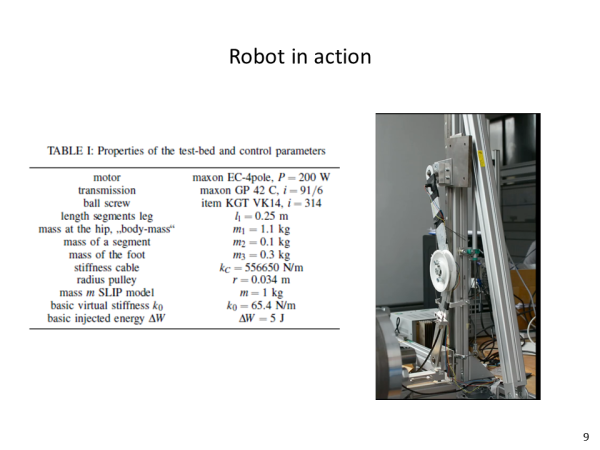
Figure 2. MARCO-HOPPER-II robot picture and its properties.
Here, we started from building the SLIP model (template), the simple model with two segmented leg mimicking SLIP, a detailed simulation model of the robot (anchor) and finally implement the SLIP based controller on the real robot MARCO-HOPPER-II. This procedure of started from human like elastic behaviour of the leg in hopping with SLIP template model and moving toward the anchor model and implementing it on a robot is a complete sample of what explained in the begining of this lecture. This procedure is shown in Fig. 3.
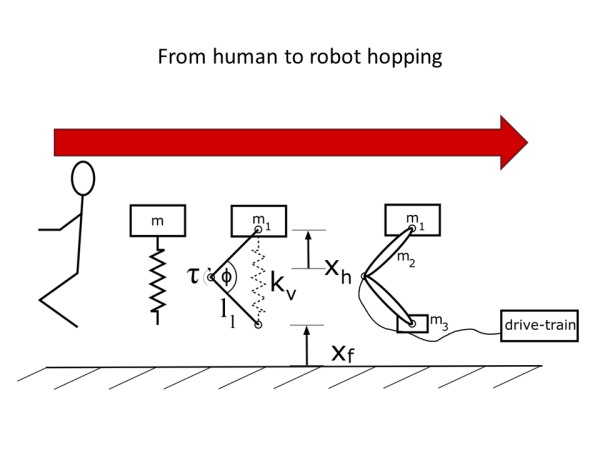
Figure 3. From human to robot hopping using SLIP-based stance leg control from [Oehlke 2016].
In order to implement on the real system, we need to consider losses at impact or friction which are not addressed in SLIP model. For that, we extend the model to have a variable stiffness (of the virtual spring between the hip and foot). Fig.4 shows the comparison between human hopping and the anchor model of the robot. Similar GRF and CoM motion patterns were generated.
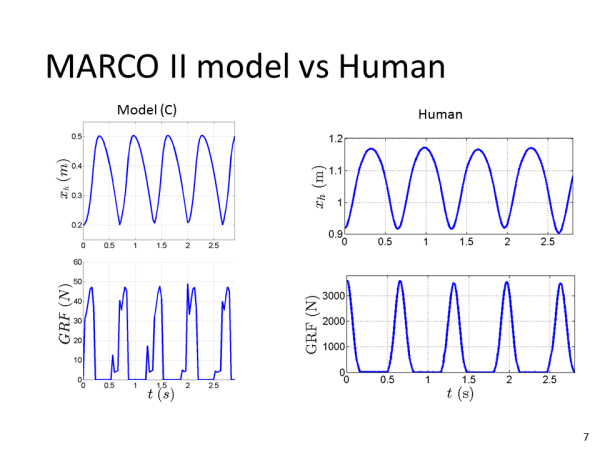
Figure 4. Comparison of human and robot model hopping from [Oehlke 2016].
Finally, the template and anchor models of the robot are compared in Fig. 5. This study shows that having a hypothsis for performing a task in takeing the aformentioned steps may result in building and controlling a functional robot with acceptable performance which is comparable to the human gaits.
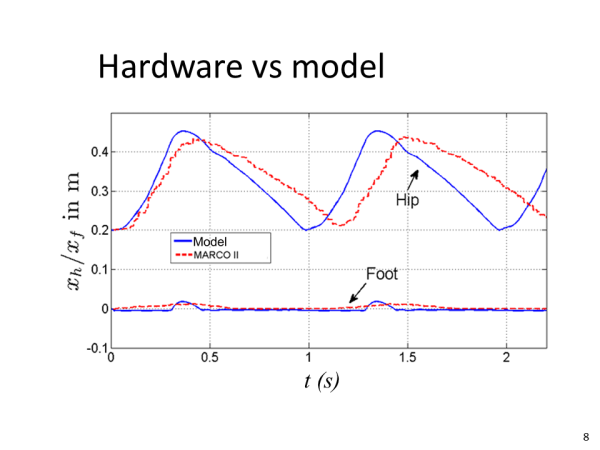
Figure 5. Comparison between the model and the robot hopping from [Oehlke 2016].
Implementation of FMCH on LOPES-II exoskeleton
The second application of implementing FMCH control on an assistive device called LOPES II robot. We showed that with such model-based controller, assistance in human motion regarding reduction in muscle activation and oxygen consumption can be achieved [Zhao 2017]. After generating the VPP and FMCH model for posture control, we are investigating the models with more detailed neuromuscular systems. As shown in Fig. 6, first we replaced the hip springs with muscles and then extend the prismatic leg to the segmented leg with knee extensor muscle (similar to the actuator in the previous study). Using this model, stable walking with a bioinspired posture control strategy implemented in a neuromuscular model is achieved. The next step is adding actuators e.g., parallel to the biarticular thigh muscles to evaluate how much of the required torque can be generated from the exoskeleton which is matching to the human posture control strategy (see Fig. 6).
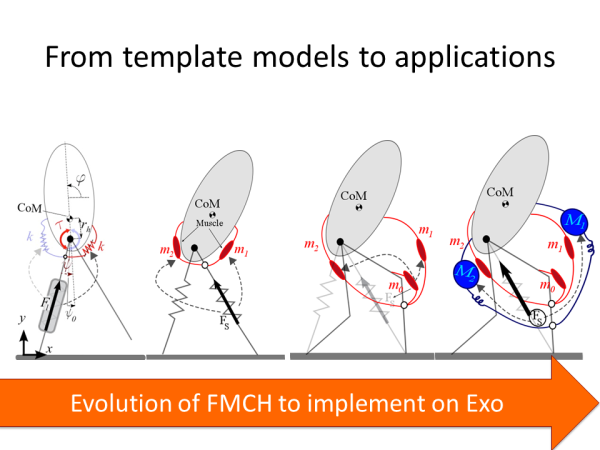
Figure 6. Concept of developing bioinspired hip control for assistive device from [Sharbafi 2017].
With this procedure, we can examine the control strategy on a simulation model which is anchored to an extended template model. The next step is implementing on the exoskeleton. In Fig. 7, the picture of the LOPES II exoskeleton is shown. We have implemented this method on the robot and evaluate the performance of the proposed bioinspired controller.
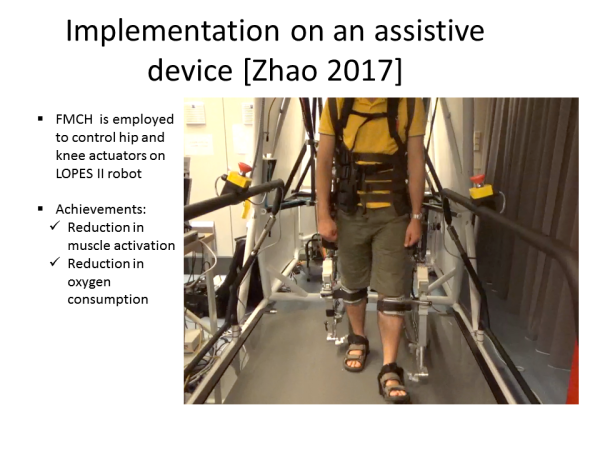
Figure 7. Experimental setup of implementing FMCH on assistive exoskeleton (LOPES II) and the achievements.
As can be seen in Fig. 8, reduction in EMG signals are observed in all muscles. This shows that the robot can help the human subject spend less muscle activation. Another measurable index for evaluating assistance level is the cost of transport (COT). We have measured oxygen consumption to calculate cost of transport in walking with 0.6 m/s speed (slow walking due to limitations in the hardware setup).
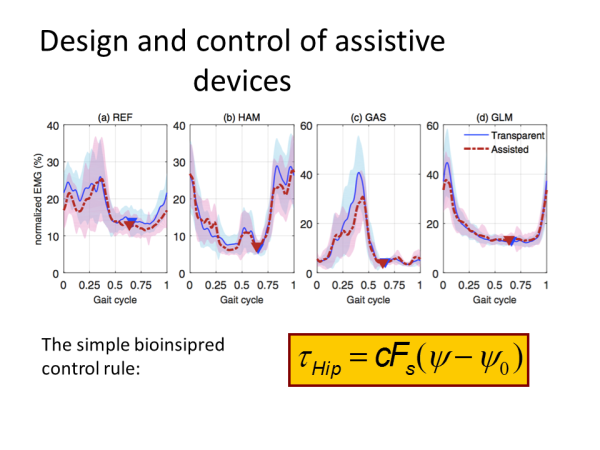
Figure 8. Reduction in EMG signals using the simple FMCH controller.
In Fig. 9 the comparison between transparent model in which the robot tries to follow human movement without assistance and the assisted trial with FMCH controller are shown. It is shown that both muscle activation and COT are reduced using our templated based bioinspired controller. The details of this experiment can be found in [Zhao2017].
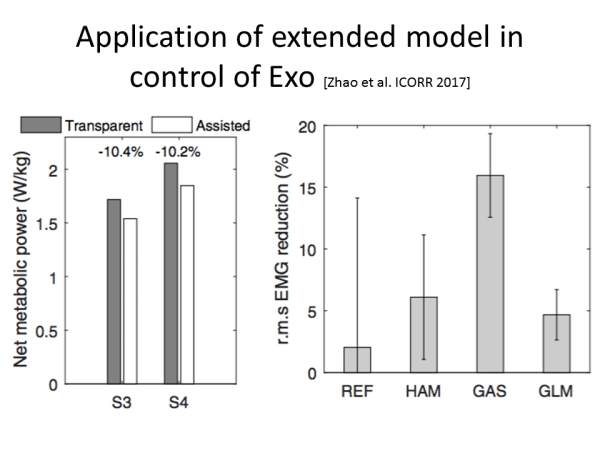
Figure 9. Assistance in human walking with LOPES II exoskeleton using FMCH controller.
In this lecture, we have explained two instances of using the modules of Advanced models of human locomotion in real applications.
References:
Oehlke, J., Sharbafi, M. A., Beckerle, P., & Seyfarth, A. (2016). Template-based hopping control of a bio-inspired segmented robotic leg. In 2016 6th IEEE International Conference on Biomedical Robotics and Biomechatronics (BioRob) (pp. 35-40).
Sharbafi, M.A., Rode, C., Kurowski, S., Scholz, D., Möckel, R., Radkhah, K., Zhao, G., Mohammadi, A., von Stryk, O. and Seyfarth, A., 2016. A new biarticular actuator design facilitates control of leg function in BioBiped3. Bioinspiration & Biomimetics, 11(4), p.046003.
Zhao, G., Sharbafi, M., Vlutters, M., van Asseldonk, E., and Seyfarth, A. (2017). Template model inspired leg force feedback based control can assist human walking. In IEEE-RAS-EMBS International Conference on Rehabilitation Robotics
